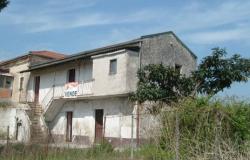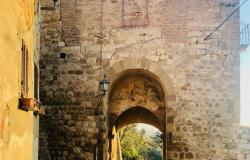Prices in Tuscany and Umbria have seen a small drop but top end properties are holding their values. However, foreign buyers expect flexibility on sellers’ part.
Few areas of Italy are more popular with foreign buyers than Tuscany and Umbria. Silvery olive groves, vineyard-encrusted hills and ancient stone-built hamlets have a perennial charm that never fails to entice prospective second homers. So how are the markets in these two areas faring in these turbulent times?
According to the research office of Italian estate agents Gabetti, Florence has seen a small decline in property prices—but not at the top end. On average, prices in the city went down by 2.1%, sale times lengthened to 7-8 months, and buyers can expect some good discounts—to the tune of 15% and up to 20%.
However, the credit crunch has had the largest impact on what Gabetti calls “marginal locations”: the cheapest areas, often in the outskirts, where people will usually rely on a mortgage to be able to fund their purchase.
By contrast, in Florence’s most sought-after areas, which Gabetti identifies as Le Cure, Campo di Marte and Poggio Imperiale, values have held—in Poggio Imperiale, prices for the best homes can go as high as €9,000 to €12,000 per square metre. But then, nearly a third of Florentine buyers are now prepared to spend more than €500,000 on their home (up from 25.6% in January 2008).
Looking ahead, the Gabetti researchers believe that those areas of the city where the new tram network will develop—three tram lines will link Scandicci to Santa Maria Novella, Novoli to Piazza della Liberta and Via Rosselli to Careggi—could see an increase in interest and, ultimately, prices in the near future. As for the countryside, Chianti villages remain expensive. Quality homes in Greve cost in the region of €4000 (more for new builds).
The market has taken more of a hit in Siena, where prices are down by about 5%. Even so, there remains a divide between demand and supply, especially among first time buyers—young couples are prepared to spend in the region of €160,000-170,000 but cheapest homes available start from €220,000-230,000.
Prime properties in particular are faring better than the rest, especially in the historic city centre, where renovated homes in ancient palazzos cost €5,000-6,000 per square metre (in Piazza del Campo, the sky is the limit).
Still, the city centre remains slightly more affordable than Lucca’s, where homes reach peaks of €7,000 per square metre. Although the northern Tuscan city has seen a 4.7% decrease in prices—a declining trend that started at the end of last year—properties in the tiny city centre remain expensive, particularly in via Fillungo and the neighbouring piazzas.
At the same time, buyers are snubbing the modern new builds on the outskirts of town, despite average discounts of 15% on the asking price. “The town has seen too much building activity, particularly developments of 3-4 level buildings in modern style with small-sized homes, whereas Lucca residents tend to prefer bigger rooms and a rustic Tuscan style,” the Gabetti report explains.
So do the foreigners. Even though overseas demand is reducing, states Gabetti, affluent Dutch, British and American buyers continue to flock to the Tuscan city, fuelling demand for flats in the historic centre and villas on the hills of Matraia, Monte Carlo, and Segromigno.
Over the border in Umbria, prices went down by 1.7% in Perugia—but the slowdown is chiefly linked to small-size investment properties. “Demand for upgrades and first time buys remains strong,” explains Gabetti. Like in Tuscany, prices are strongest in the historic city centre, where a good flat costs an average of €3,500 per square metre, with peaks of €5,000 in the most sought-after areas, such as Corso Vannucci.
Elsewhere in the region, places that draw plenty of foreign buyers, like Gubbio, are seeing prices in the range of €2400 to €3,000 per square metre for good quality homes that are either new or ready to move in.
These statistics, however, need to be taken with a pinch of salt, warns Roger Coombes of Cluttons Italy, who sells traditional Italian homes mainly to foreign buyers. “There are really two distinct market sectors in this part of Italy. The first consists of town and suburban apartments and terrace houses which, at the risk of oversimplifying, we can call the local market. This is the market covered by the available sources of statistical data on property sales,” he says. “The other or ‘foreigners’ market is fuelled by the demand for traditional farmhouses or historic town houses, restored or for restoration, mainly from foreign buyers who are driven by the wish to buy into a somewhat romantically perceived idea of the Italian way of life, over and above just wanting to make a sound long term investment.”
The latter market, he explains, only started in the 1980s “when it was possible to acquire run down or ruined properties in picturesque locations at very attractive prices.
“That phase has run its course: Italian farmers now have a very shrewd idea of the value foreign buyers perceive in a ruin, and the supply of such ruins has run relatively dry,” he says. “The market has matured, some properties restored to a high standard 10 to 20 years ago are coming up for sale as their owners adapt to changing personal circumstances, and buyers generally are very well informed about the types and quality of properties to be found in the various regions of Italy.”
While the number of transactions in the ‘foreigners’ market is too small to draw some meaningful statistical conclusions, empirical observation suggests that “currently this market is undoubtedly being negatively affected by the falling off in demand particularly from the markets which were hit first and worst by the sub-prime crisis and the subsequent credit squeeze – the USA and the UK,” Coombes says.
“This negative tendency was detectable in the second half of 2007. The current banking and stock market turmoil has inevitably worsened the situation, in the short term at least. Typical UK buyers in the price bracket up to €500,000 would be a middle-aged couple who re-mortgage their UK home to buy a holiday home abroad. With the current decline in the UK housing market, many such people are now hesitating before making a buying decision.”
But even premium, cash-rich purchasers are being cautious. “At the top end of the market, where buyers tend to be very well informed financially, if not actual practitioners, the mood is very much one of waiting until the financial markets have calmed down and people know what their assets are worth and feel that they will be buying when this market has bottomed out,” Coombes says.
Although he is wary of making “sweeping generalisations” in a statistically small market where no two homes are the same, Coombes “can say with some certainty that buyers who have decided in principle that they wish to acquire property in Tuscany or Umbria remain strongly aware of the underlying value of property in this unique region of Europe.” However, he adds, “inevitably, they assume that market forces apply even here, and right now they are expecting to find some elasticity from the vendors’ side.”













